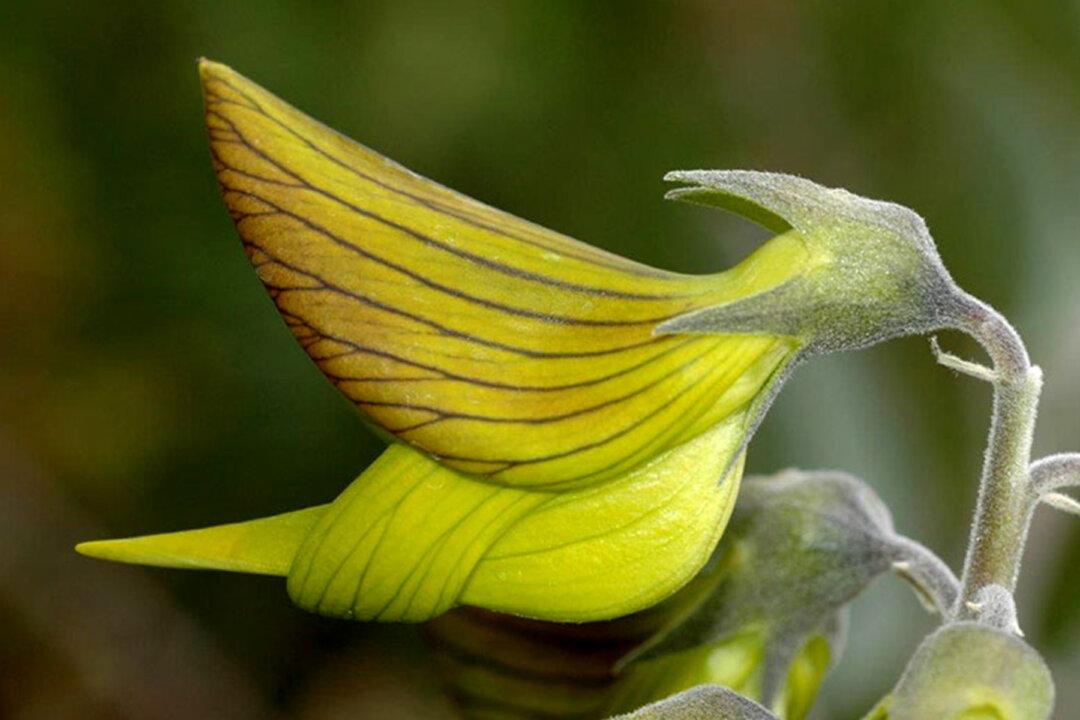To the untrained eye, this perfect little parcel of petals may look like an origami hummingbird. It is, in fact, a native Australian flower that blooms to emulate the tiny bird perfectly, and it’s taking the internet by storm.
The plant that produces this extraordinary flower is known as the green or regal birdflower, scientific name Crotalaria cunninghamii. According to Australia’s Botanic Gardens & Parks Authority, the plant is an upright shrub with a brief lifespan, prolific in the northern half of Western Australia all the way from the coast into the desert.





